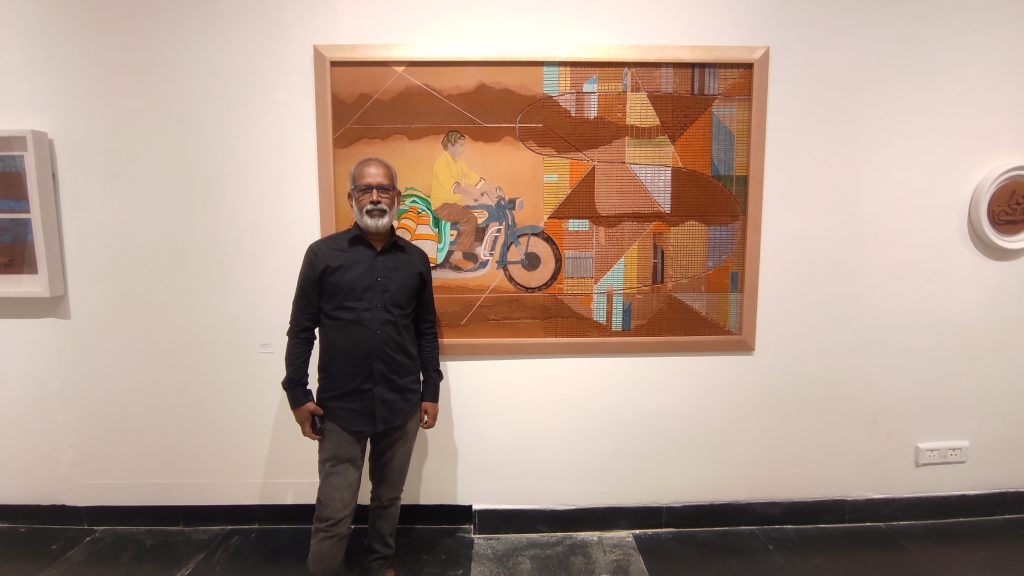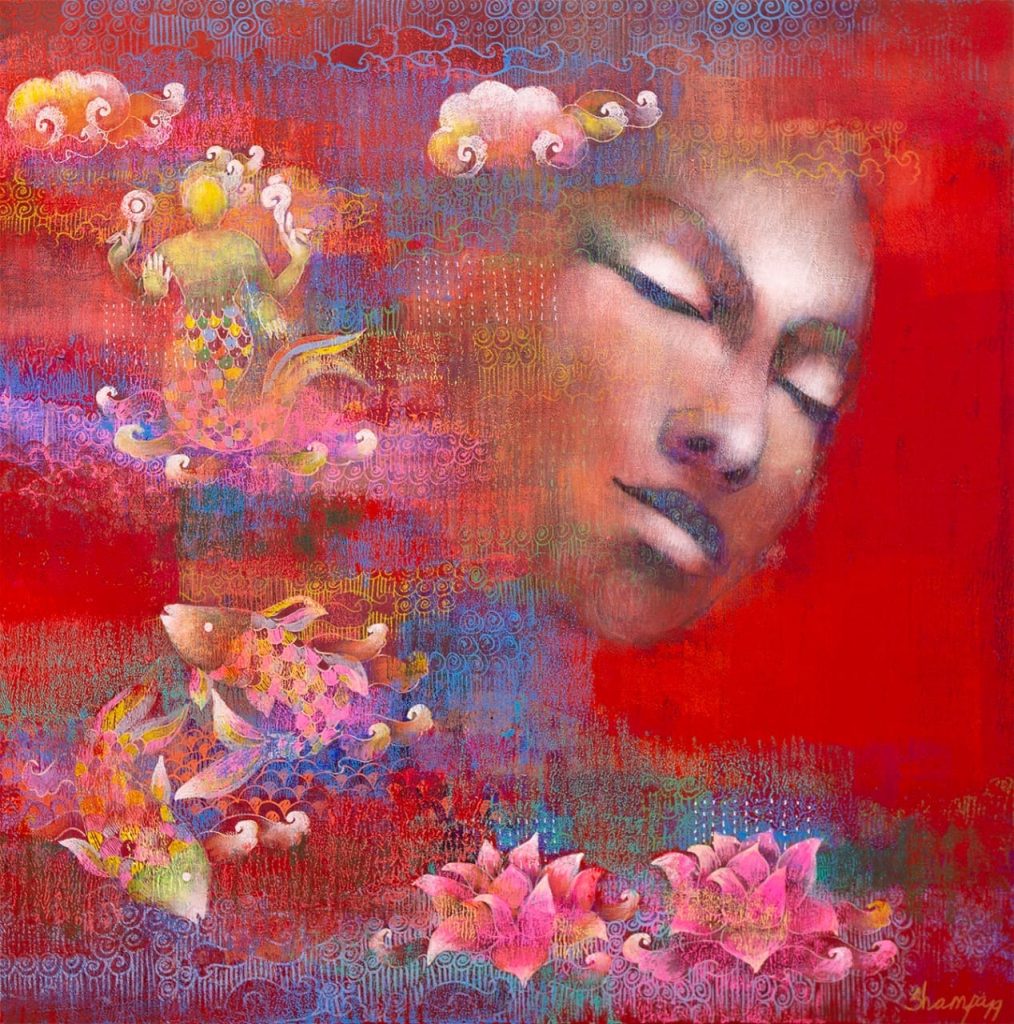It’s important to look at the changes happening in and around our world, as it becomes an irresistible part of our lives. Contemplating those changes and mulling over them to understand what we actually lost and what we are about to get is certainly necessary. Due to the current pattern of urbanization, deforestation rates have surged. This has forced animals and fellow human beings alike to embark on journeys from their original habitats in search of alternative spaces that can accommodate their needs. A new exhibition called, “Tracing the Trails of Migration” by Srishti Art Gallery, reflects all these aspects together in Chippa’s work. Chippa’s work intelligently incorporates the cityscapes through the efficient and creative use of horizontal and vertical lines that create an illusion of expansion of spaces. At the same, time, Chippa cleverly uses figurative elements to juxtapose with the abstract elements in his works. His works contain different mediums that offer a variety to the audience to look at the works from diverse perspectives. His creative use of colours adds another realm to his work, which offers a diverse take on looking at the real world.
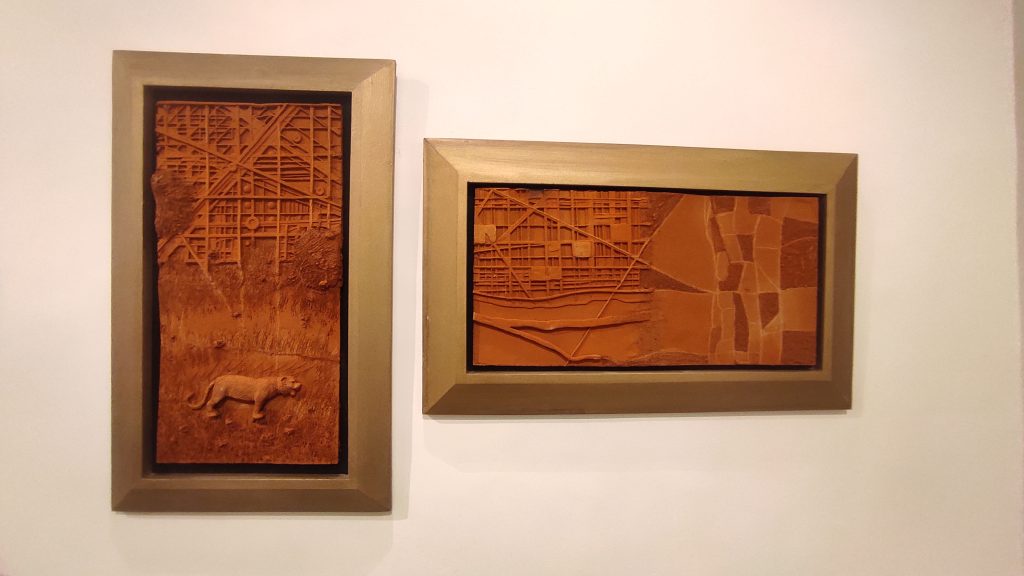
Courtesy: Abhishek Dixit.
In recent decades, the pace of this transformation has been unprecedented, especially in the realm of urban expansion. As an artist based in Hyderabad, Chippa had personally witnessed the rapid urbanization and construction activities taking place. Despite the real estate and planned infrastructure growth, the city’s overall design frequently neglects coherence. As a consequence, the Deccani vegetation, wildlife, natural soil, and rock formations irreversibly vanish. Through his artistic expression, he seeks to shed light on these issues and provoke contemplation about the consequences of unchecked urbanization.
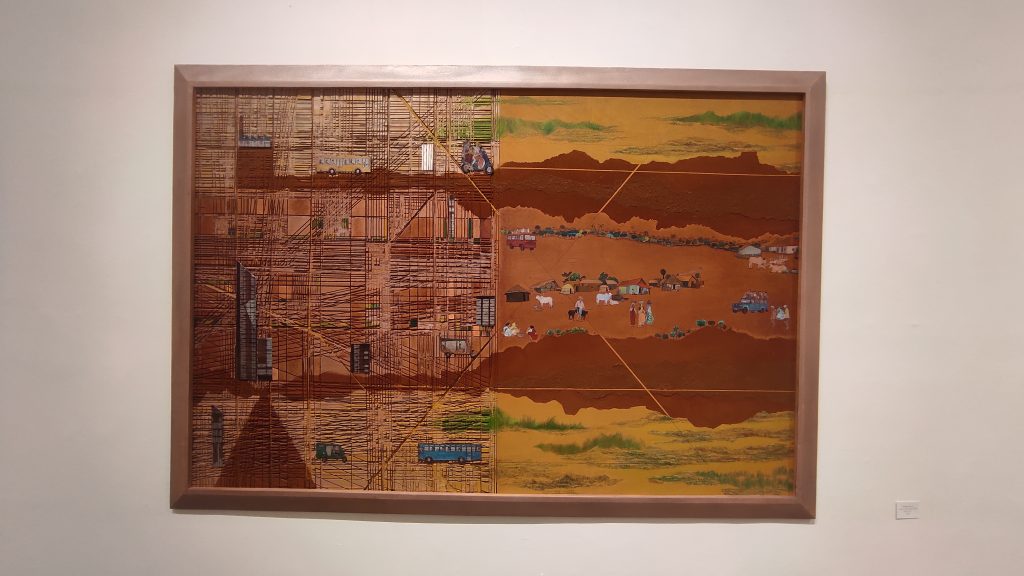
Courtesy: Abhishek Dixit.
Also, the migration of people from rural and semi-urban areas has profoundly impacted the city’s demographics and visual landscape. the city. This migration brings with it a wealth of memories – of land, vegetation, animals, materials, and objects – as individuals adapt to their new lives. However, as the city embraces them with new experiences, old memories begin to fade. In his artistic practice, he strives to revive and represent these lost, forgotten, and faded memories. He employs materials such as soil, wood, and metal – readily available yet inherently valuable – to create visual forms. This process allows him to reconnect with his own memories of village life, even as he navigates the concrete jungle of the city. In his work, his objective is to create a sanctuary from the hustle and bustle of city life, while simultaneously providing a captivating glimpse into the visual storytelling of migration. Furthermore, he strives to capture the unpredictable essence of urbanized rural landscapes.
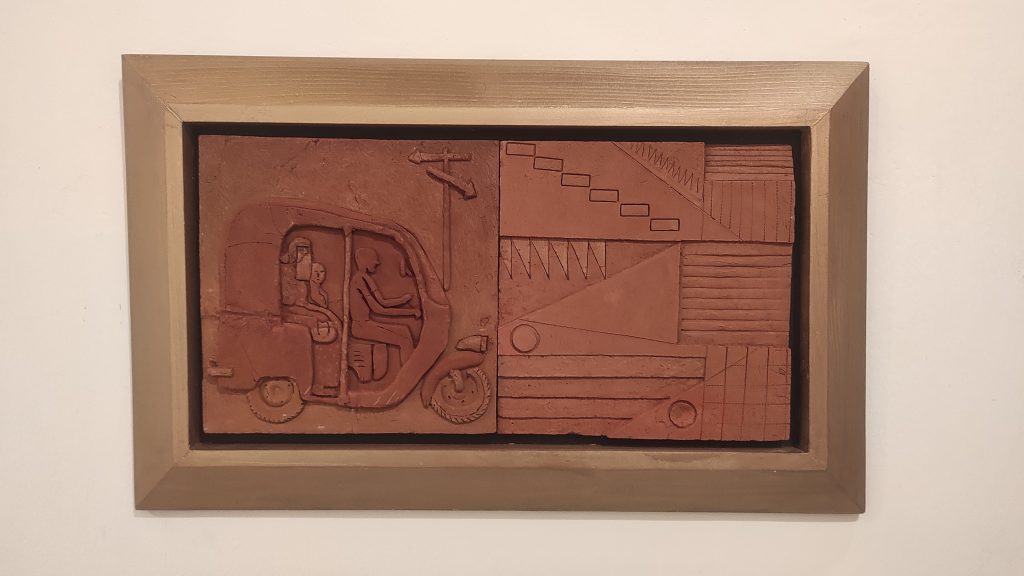
Courtesy: Abhishek Dixit.
Chippa’s inspiration comes from his past as he elaborates, “After my masters, I went back to Hyderabad, and then I went to my small farmhouse, 40 km away from the city. I made a studio over there, and daily I was working there. I saw the landscape changing, the development occurred, and numerous buildings came. I feel no peace over there and the increase in pollution. Flora and Fauna disappeared slowly, and my family or others are not going to see the land as it was before. My intention is to show soil and raw lands in my works as it is difficult for the younger generation to find that now. Everything is filled with concrete now and my motivation was to show how urbanization is taking over the whole area, which were my concerns. During my time studying in Baroda, I encountered various artistic mediums. In fact, I even had the opportunity to teach in college. I have always emphasized to my students the importance of starting with printmaking before moving on to paintings. This is because printmaking allows for a wide range of experimental possibilities and techniques. Once you are experienced with all the mediums, you can do any experiment you want. I tried to show people from different communities, reflected the agricultural side as well. Industrial things took over agriculture and that is the problem. My focus was on to connecting the city with other planes using terracotta; I saw Google Maps and understood the aerial view of the city.”
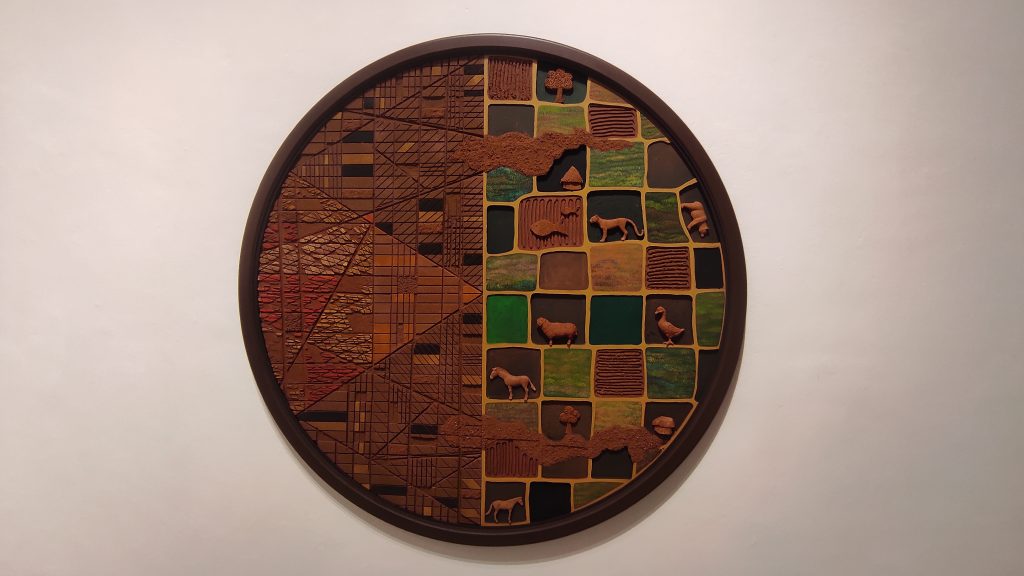
Courtesy: Abhishek Dixit.
Chhipa explained the way he incorporated different natural elements into his work. “I like to do nature, and I am using the same thing in my work. Wood is nature, and soil is nature. Terracotta and metal are also natural. So the representation of material is very important, and I used metal. I wanted to show the buildings by using these materials. For representing vehicles, I used aluminium sheets. Mediums have their own language to speak about. That’s what I wanted to use. Just throwing it on canvas is not my creativity; I always think about it and use it wisely. I am motivated by the work and definitely going to come up with something new by using the same material.” Chippa Sudhakar’s artworks delve into urbanization, migration, and their impact on rural communities. Using soil, wood, metal, and various other materials, he skillfully crafts visual representations that evoke memories of his village and ignite contemplation in viewers regarding their own ties to the ever-evolving urban landscapes.”
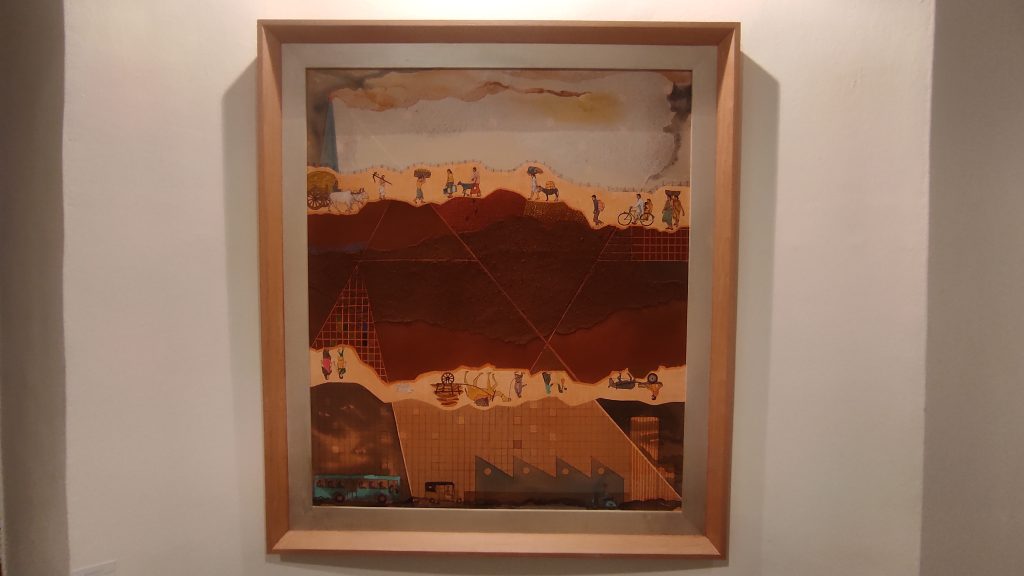
Courtesy: Abhishek Dixit.
Read Also:

Contributor

